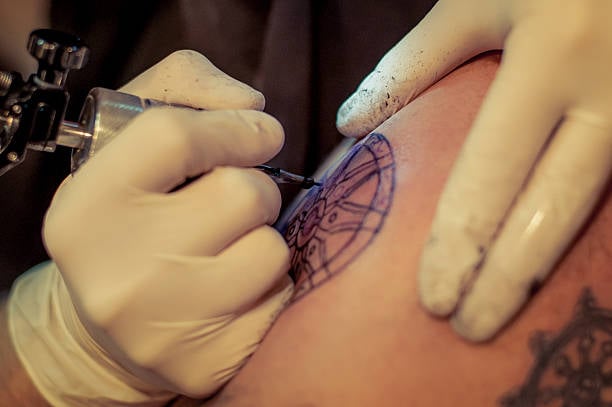Introduction to Laser Tattoo Removal
In recent years, laser tattoo removal (ازالة الوشم بسعر في الرياض)has emerged as a transformative solution for those looking to erase unwanted ink. This procedure offers hope to individuals seeking a fresh start, providing a method to effectively remove tattoos that no longer align with their personal or professional lives. Understanding the process and what it entails is crucial for anyone considering this option.

Understanding the Appeal of Laser Tattoo Removal
The appeal of laser tattoo removal lies in its precision and effectiveness. Unlike traditional methods such as dermabrasion or salabrasion, which can be painful and leave scars, laser technology offers a non-invasive approach with minimal risk of scarring. This makes it suitable for various skin types and tattoo colors, ensuring a safer and more predictable outcome.
- Precision and Effectiveness: Highlight how laser technology precisely targets ink particles without damaging surrounding skin.
- Non-invasive Nature: Contrast with traditional methods, emphasizing the reduced risk of scarring.
How Laser Tattoo Removal Works
The process of laser tattoo removal revolves around the principle of selective photothermolysis. Specialized lasers emit high-intensity light pulses that penetrate the skin and are absorbed by the tattoo ink. This causes the ink particles to fragment into smaller pieces, which are then naturally eliminated by the body’s immune system over time.
- Selective Photothermolysis: Explain the principle behind how lasers target specific ink colors.
- Ink Fragmentation and Elimination: Describe the breakdown of ink particles and their removal from the body.
Steps Involved in Laser Tattoo Removal
Consultation and Assessment
Before undergoing laser tattoo removal, a consultation with a qualified technician is essential. During this initial visit, the technician will assess the tattoo, evaluate skin type, discuss expectations, and outline the treatment plan. This step ensures that the procedure is tailored to individual needs and concerns.
- Initial Assessment: Stress the importance of evaluating factors like tattoo size, location, and skin type.
- Treatment Planning: Emphasize the personalized approach to develop a suitable treatment plan.
Preparation for the Procedure
On the day of the procedure, it’s advisable to arrive with clean, unbroken skin in the treatment area. The technician will provide protective eyewear to shield the eyes from the laser’s intense light. Additionally, topical anesthesia may be applied to minimize discomfort during the session.
- Skin Preparation: Guide on the importance of clean skin and potential use of topical anesthesia.
- Eye Protection: Highlight the safety measures taken to protect the eyes from laser exposure.
The Laser Treatment Process
During the actual treatment, the technician will use a handheld laser device to deliver controlled pulses of light to the tattooed area. Patients may experience a sensation similar to snapping rubber bands against the skin, which varies depending on individual pain tolerance and the location of the tattoo.
- Treatment Procedure: Detail the use of laser pulses and the sensations patients might expect.
- Pain Management: Address how discomfort is managed during the session.
Post-Treatment Care and Recovery
After the procedure, it's normal for the treated area to appear red and swollen, akin to a mild sunburn. The technician will provide instructions on proper wound care, including the application of topical ointments and avoiding sun exposure. Multiple sessions may be required for complete tattoo removal, spaced several weeks apart to allow the skin to heal.
- Recovery Period: Explain typical post-treatment symptoms and their duration.
- Ongoing Care: Emphasize the importance of following aftercare instructions for optimal results.
Benefits and Considerations of Laser Tattoo Removal
Advantages of Laser Tattoo Removal
The primary advantage of laser tattoo removal is its ability to significantly lighten or completely remove tattoos with minimal risk of scarring. It offers a tailored approach based on tattoo characteristics and patient preferences, making it a versatile option for individuals seeking tattoo alteration or removal.
- Effective Removal: Highlight the effectiveness in fading or removing tattoos.
- Versatility: Discuss how the procedure can be adapted to different tattoo sizes and colors.
Potential Considerations
While laser tattoo removal is generally safe, some factors such as tattoo location, skin type, and ink depth can influence treatment outcomes. Darker ink colors like black and blue respond more effectively to laser treatment compared to lighter colors such as yellow or white. Additionally, individuals with sensitive skin may experience temporary pigment changes or mild scarring.
- Treatment Considerations: Address factors affecting treatment efficacy and potential side effects.
- Skin Sensitivity: Provide insights into how different skin types may respond to the procedure.
Conclusion: Embracing a New Beginning
In conclusion, laser tattoo removal offers a reliable pathway for individuals looking to erase the past and embrace a fresh start. By understanding the process, preparing effectively, and following through with proper aftercare, individuals can achieve significant tattoo removal results safely and effectively. Whether seeking complete removal or modification of existing tattoos, consulting with a qualified technician ensures a personalized approach tailored to individual needs.
Recap of Laser Tattoo Removal Benefits
- Precision and Safety: Recap the safety and precision benefits of laser technology.
- Personalized Approach: Summarize the importance of personalized treatment plans.
- Future Outlook: Encourage readers to explore their options and consider consulting with a qualified technician to discuss their tattoo removal goals.
